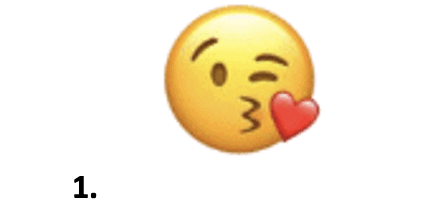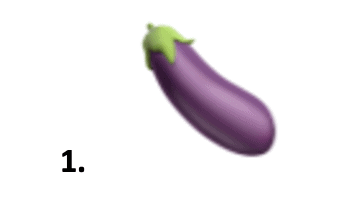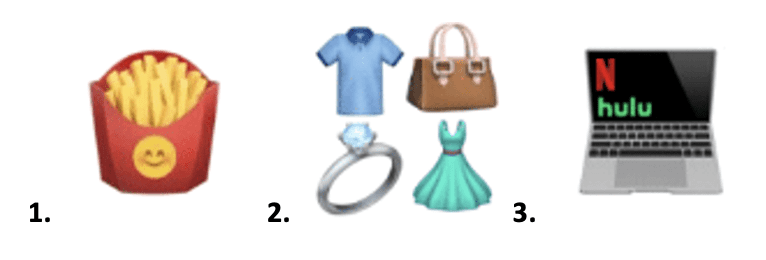Adobe announced the latest data on the vital role and impact of emoji in digital communication in a new study.
The study, Adobe Future of Creativity: 2022 Australian Emoji Trend Report, revealed how emojis are transforming the way the world expresses itself.
Over half of Australians have actively increased their emoji use over the past 12 months, with nearly all users (82%) sending up to 50 emojis in their text or online messaging a day. Australian emoji users are significantly more like to send more emoji per day than all other markets.
The Adobe findings also emphasised on the importance of new inclusive emojis in the Unicode 15.0 release in September such as the maracas, flute, khanda, hair pick and folding hand fan.
Kamile Demir, computer scientist at Adobe and Adobe’s representative on the Unicode Emoji Subcommittee, said: “Emoji have become a favorite form of creative self-expression for people everywhere.”
“As the creative industry leader and a member of the Unicode Consortium, we recognise the potential for emoji to promote inclusivity, spark cultural conversations and even positively impact mental health.”
Among the report’s additional findings: emoji don’t always mean what users think they do and are always changing; emoji have become a hallmark of Australian dating culture; and emoji use at work improves efficiency, boosts creativity, and builds stronger relationships.
Paul D. Hunt, typeface designer and font developer at Adobe, said: “Our findings reveal the importance of emoji across all of our digital conversations. As a visual form of communication, emoji help fill the emotional gaps when representing ourselves online and help us communicate our personal identities, thoughts and feelings in ways words often cannot.”
The report explored when, why and how Australians are using emoji to advance self-expression and identity; diversity, equity, and inclusion; dating and relationships; workplace communications and more. This fun, fast and friendly form of digital communication has transformed the way Australian express themselves and continues to push the boundaries on how Australian emoji users bridge conversations across age, race, culture and beyond.
Australia’s Favourite Emoji
There is an extensive selection of emoji to use, and new emoji are constantly released on keyboards all over the globe, but the top five most used emoji are similar globally. Face with tears of joy is consistently the top emoji of both male and female users globally. Male emoji users second favourite is thumbs up and females second favourite is rolling on the floor laughing face.
In Australia, the top five most used emoji are a lot happier in comparison to last year:

This was last year’s top five:
 Emoji are most used by Australians to make conversations more fun (64%), and more than half (51%) use emoji to better communicate their thoughts and feeling than words do alone. Less than half of Australians (47%) use emoji to quickly respond to text or online messages and more than half (51%) are more likely to respond to a message if it contains an emoji.
Emoji are most used by Australians to make conversations more fun (64%), and more than half (51%) use emoji to better communicate their thoughts and feeling than words do alone. Less than half of Australians (47%) use emoji to quickly respond to text or online messages and more than half (51%) are more likely to respond to a message if it contains an emoji.
Emoji are most used by Australians to communicate with friends (83%), significant other/partner (48%) and siblings (41%).
Emotions and emoji
While two-thirds (64%) of Australians use emoji to make conversations more fun, they are also used as a powerful emotional tool, according to the Adobe study. Nearly all Australians (92%) use emoji to lighten the mood and show support for the people/person they are communicating with.
While more than half (65%) of Australians lean on emoji use when they have difficulties expressing their emotions in words. Love (73%) and happiness (71%) are the top emotions Australian emoji users express using emotions. Most Australian users (87%) are likely to feel more understanding or more empathetic towards someone if they use an emoji.
 Australians also like the use of emoji to communicate their emotions across language barriers (94%) and it makes it easier for them to express their emotions (90%). While more than half (60%) believe using an emoji in digital communications has improved their overall emotions and mental health.
Australians also like the use of emoji to communicate their emotions across language barriers (94%) and it makes it easier for them to express their emotions (90%). While more than half (60%) believe using an emoji in digital communications has improved their overall emotions and mental health.
Over half of Australian male users (62%) and over half of female users (59%) who use emoji in their digital communications have improved their mental health, the Adobe study found.
Emoji users continue to want more inclusive and representative emoji
Despite the prolific use of emoji, there is a strong consumer desire to see more diverse and inclusive emoji on the keyboard. Most Australian emoji users agree that emoji should continue to strive for a more inclusive representation of users (82%), with only half of the country (55%) feeling their identity is adequately reflected in current emoji options.
Over half (53%) of Australians are likely to customise an emoji to better reflect their personal appearance, while 52% wish they had more emoji customisation options to better reflect themselves. When asked what changes users would like to see, hairstyle or colour (41%), eye colour (34%), accessories and body type (33%) are the top customisation options users want.
While Australians do believe inclusivity for emoji has improved, age (41%), culture (35%) and race/ethnicity (36%) are the top emoji categories that users want to see inclusion expand in. Australian users are most excited about three new emoji that are more inclusive:

Decoding the Emoji Language
More than half (73%) of Australian emoji users feel confident they’re up to date on the meaning of the latest emoji and use them correctly, with 81% agreeing you should only use emoji when you fully understand them.
In Australia, the top three most misunderstood emoji are:

This was in comparison to last year’s findings:
 Emoji role in romantic impression
Emoji role in romantic impression
Emoji make a lasting romantic impression. Not only is emoji use seen as an indicator of relationship success, but it also influences whether a second or third date is in the future.
For Australian emoji users interested in flirting with or dating someone they’re talking to, 70% believe using an emoji in conversation is a must when flirting.
More than half (55%) agreed they are more likely to use even more emoji when communicating with someone they’re interested in flirting with or dating with 58% revealing they feel more comfortable expressing their feelings through emoji to someone they are interested in.
In Australia, the emoji that makes dating apps users more likeable when flirting or dating is:
 Whereas the emoji that makes dating app users in Australia less likable when flirting or dating is:
Whereas the emoji that makes dating app users in Australia less likable when flirting or dating is:

Over half (62%) of Australian users assume their relationship with someone is going well if they use more emoji when talking to each other, while 41% are more likely to see out a second or third date with someone who communicates using emoji.
The future of emoji
The future of emoji is already unfolding in new and creative ways, from purchasing products and making payments to creating exclusive online usernames and websites.
Half of the Australian emoji users (50%) are more willing to buy an item using an emoji. The majority of Australian users are open to new ways of using emoji, such as confirming attendance at an event (60%), sending or receiving payments (36%) and communicating with a doctor (32%).
In Australia, products most likely to be purchased via an emoji are:

